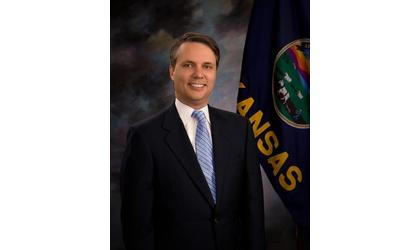In Kansas, we have a strong tradition of helping our neighbors in times of trouble — of assisting those in need with a hand up, of doing what we can with what little we may have. The last few years have been financially difficult for the state of Kansas. Dramatically reduced tax revenues forced just as dramatic cuts in spending for state services.
When Gov. Sam Brownback took office last year, the state faced a $500 million budget shortfall and more difficult spending choices. But the governor refused to cut spending to the state’s Medicaid program, a crucial safety net for 385,000 mostly low-income Kansans that provides health benefits, long-term care and support. Instead, he transferred more than $200 million from the state’s highway funds to ensure no one lost his or her Medicaid benefits and health care providers didn’t have their payment rates reduced.
The costs of Medicaid continue to rise. But that’s not the only challenge the system faces. Thousands are on waiting lists for assistance and those who receive the benefits often receive uncoordinated and fragmented care that results in poor health outcomes.
As a craniofacial surgeon who takes care of Medicaid patients, I often must deliver bad and good news. The one thing I’ve learned in difficult situations is we must focus on getting the best result possible for the patient. For decades, Medicaid in Kansas has been a “one size fits all” program that didn’t always help the person get the best outcome. The results can be disastrous, especially for our most vulnerable disabled Kansans.
Life expectancy for a disabled person is at least two decades less than that for the comparable population. A University of Kansas study found Medicaid for the developmentally disabled was fragmented, poorly coordinated and did not consistently provide recommended health care, like screenings for breast, cervical or colorectal cancer. Poor access to care and lack of care coordination led to increased care costs and poor outcomes. This study demands action by policymakers.
Skyrocketing costs, growing waiting lists and fragmented care, none of these are acceptable for our most vulnerable Kansans.
That is why the governor and this administration spent the past 14 months developing a reform plan to improve health outcomes while finding cost savings. It has been one of the most transparent and highly involved planning processes in state history. Thousands of Kansans participated. The administration traveled the state conducting public meetings, conducted conference calls, hosted web chats and solicited hundreds of ideas and comments online. This feedback and the ideas provided set the framework for Kansas solutions.
Given our difficult situation, the Kansas consensus was: Don’t cut off thousands of Medicaid recipients like Missouri; don’t make double digit rate cuts to providers like California; coordinate care to focus on the best outcomes for the individual Kansans, especially for those with greatest needs, while saving money; reward positive outcomes; and provide choices and creative options for Kansans.
The Kansas Medicaid reform plan known as KanCare will reduce the number of people unnecessarily living in institutional settings, decrease re-hospitalizations and manage chronic conditions through coordinating and integrating behavioral health, medical care and long-term services and supports.
The plan also includes $500 million in incentives to provide better care for the disabled, improved outcomes and whole-person care. This will ensure those who the state partners with focus on what is best for the patient, not their bottom line. If they don’t meet the expected patient outcomes, this funding will be withheld. As detailed in the proposal, the chosen companies will be experienced in coordinating care for vulnerable populations.
Change can be difficult. That is why the Brownback administration is taking its time with these reforms. Many states have implemented rate cuts and eliminated thousands of needy recipients in less than nine months. Gov. Brownback insisted we take two years to develop and implement these reforms. Roughly 74 percent of Medicaid beneficiaries already are under some form of managed care (albeit without care coordination or outcomes incentives). To delay these reforms guarantees more costs, rate cuts or possibly cutting off needy Kansans. That does not improve the health or wellness of anyone.
We are focused on getting the best possible results for Kansans who rely on Medicaid. Kansas can and must do better for its most vulnerable citizens.
I encourage all Kansans to learn more about KanCare from the Kansas Department on Aging’s website,www.agingkansas.org. Feel free to submit any questions to KanCare@kdheks.gov.
MOST VIEWED STORIES
Neb man seriously injured in Brown Co wreck
Two wrecks, arrests, in Atchison Co
Sabetha woman injured in Brown Co rollover crash
Hiawatha man sentenced for failing to register as sex offender
Two local cooperatives announce merger agreement
Waterville man charged with murder waives prelim hearing
Marysville teen injured in Nemaha Co rollover crash
Missing Rock Port juveniles found
Trio arrested after Jackson Co traffic stop
Pre-teen named as business window breaker
Neighbor's knife threat ends with arrest
Police officer arrested in Pawnee County assault case
Couple arrested on drug charges after trespassing complaint
Longtime Doniphan Co official announces retirement
Mayetta man jailed on drug and weapons charges
Topeka man jailed in Jackson Co following pursuit
Holton man injured in vehicle-pedestrian collision
Hiawatha police officer recognized for service
LATEST STORIES
Gov. Pillen honors 2025 Wellness Award recipients
Atchison plans for visitor influx for BC weekend
Evergy rate increase approved Thursday
Hiawatha police officer recognized for service
"Jessie James in Nebraska" program at Falls City Library
Neighbor's knife threat ends with arrest
Richardson County considering flood plain buyout program
Police officer arrested in Pawnee County assault case

 Printer Friendly
Printer Friendly
 Email to a Friend
Email to a Friend






